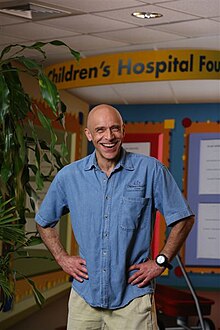Willy Fischler | |
|---|---|
 | |
| Born | 1949 (age 74–75) Antwerp, Belgium |
| Nationality | dual American Belgian |
| Alma mater | Universite Libre de Bruxelles (License and Ph.D.) |
| Known for | Invisible axion, see Axion. M(atrix) theory. Gauge mediation, see Minimal Supersymmetric Standard Model |
| Scientific career | |
| Fields | Theoretical Physics |
| Institutions | University of Texas at Austin University of Pennsylvania Los Alamos National Laboratory CERN |
| Doctoral advisor | Robert Brout |
| Doctoral students | David Berenstein Xenia de la Ossa |
Willy Fischler (born 1949 in Antwerp, Belgium) is a theoretical physicist.[1] He is the Jane and Roland Blumberg Centennial Professor of Physics at the University of Texas at Austin, where he is affiliated with the Weinberg theory group. He is also a certified Flight Paramedic (FP-C) and was a Licensed Paramedic with Marble Falls Area EMS and a volunteer EMT with the Westlake Fire Department.
His contributions to physics include:
